The Peculiar History of Celebrity Dolls
How a commemorative doll of Karl Lagerfeld is related to the Venus of Willendorf.
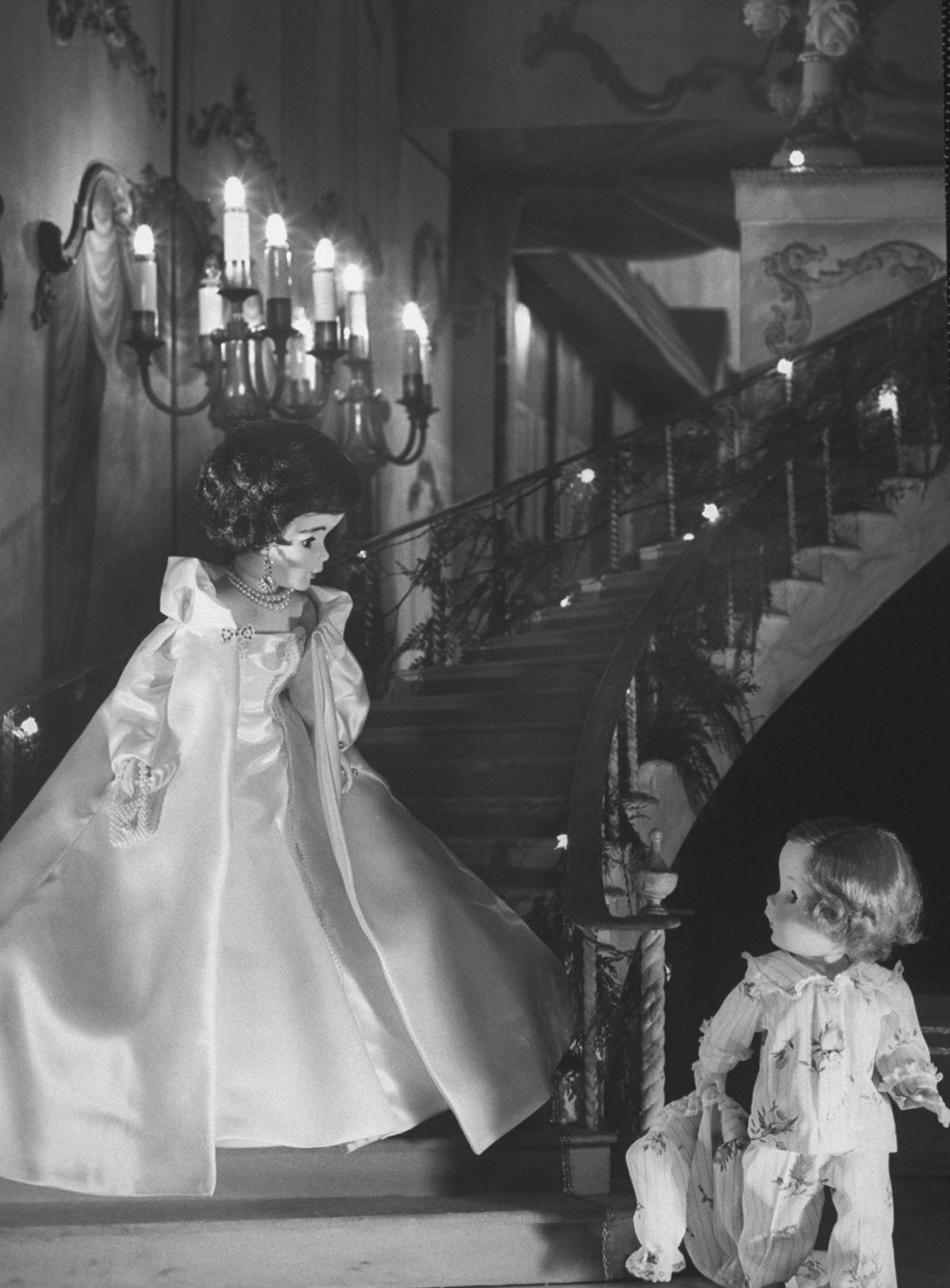
Before Princess Charlotte of Cambridge, second child of Prince William and Kate Middleton, was even one week old, her royal visage had been on the cover of newspapers and magazines. Within a month, you could buy your very own commemorative doll version of the little princess for about $100, from at least three different companies. Some collectors had special “reborn” versions of baby Charlotte made, paying thousands of dollars to assure that every vein and wisp of hair was perfectly in place.
While the production of celebrity dolls may seem like a byproduct of our current celebrity-obsessed culture, it is actually an art as old as doll-making itself. “The first commemorative ‘doll,’ in fact the first doll, is probably the Venus of Willendorf and other Venus figures discovered in Europe that are between 25,000 and 40,000 years old,” says doll historian Ellen Tsagaris of Dr. E’s Doll Museum Blog. These Venus figures are thought to have represented the earliest goddess, “mother earth.”
Fictional gods and goddesses, along with flesh and blood queens and kings, were the world’s first celebrities, and representations of them served many purposes in early society. “Death masks, like Tut’s, and statues of the Egyptian Pharaohs and their Queens, like the famous beauty Nefertiti, are the ancestors of today’s portrait and commemorative dolls,” Tsagaris says.
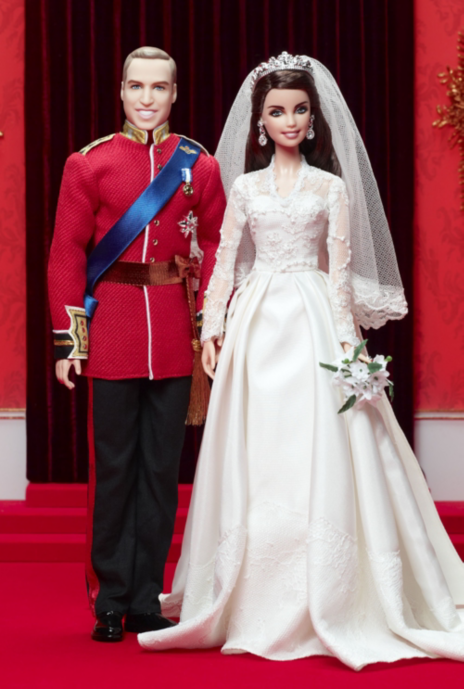
Dolls to commemorate the wedding of Prince William and Kate Middleton. (Photo: Courtesy Mattel)
These figures were a way to commemorate important moments, to inspire devotion, and to give people an opportunity to “see” those that ruled over them on earth and in heaven. Early Christians used “santos” dolls, which represented saints and biblical figures, as teaching aides. On the other side of the world, the Japanese excelled in making dolls that represented deities, royals and Kabuki actors.
As the centuries progressed, effigies of famous people, like those in Westminster Abbey, were crafted to keep the image of the departed alive. Fashion dolls, used to keep wealthy women abreast of the latest fashions, were sent around the globe. Starting in the 14th century, toy soldiers were made to inspire future soldiers and commemorate victories.
In the 16th century, Margaret Lennox commissioned a painted portrait of her toddler granddaughter, Arabella Stuart, who many considered the rightful heir to Queen Elizabeth I. In the painting, the child holds tight to a small doll, which with its red hair and pale skin looks suspiciously like a certain Virgin Queen.
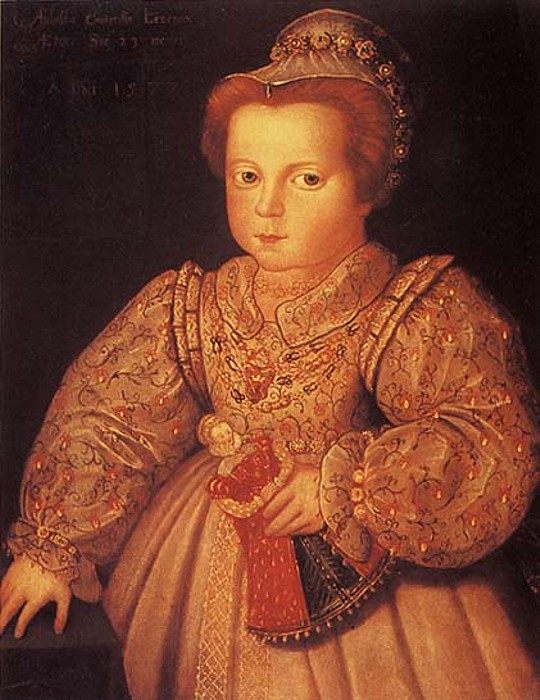
Lady Arabella Stuart, with doll. (Photo: Public Domain)
By the 17th century, doll-making had turned even more political, with the Guy Fawkes-inspired scarecrow figures or “Guys” created in remembrance of the 1605 Gunpowder plot, when Fawkes and a group of revolutionary Catholics plotted to overthrow the royal house of Stuart. After Fawkes’ execution, representations of him were burned in effigy to celebrate the survival of the monarchy. According to Tsagaris, “Guys may have been among the first ’modern’ celebrity dolls” that had nothing to do with religious iconography or the representation of the established elite.
But it was during the busy, knick-knack filled Victorian era that the production of commemorative dolls, and dolls as children’s playthings exploded. In the Western world, the birth of the middle class meant that disposable income was on the rise and dolls were no longer just for the wealthy or religious. Advances in communication and transportation meant that important events and notable people became more widely celebrated. Owning your own version of a hero, royal or great beauty not only connected you with the person in question, it reminded you of a person or event that made you happy. It also showed your neighbors your patriotism, or your status as a person in the know.
With the evolution of wax modeling, revolutionized by Madame Tussaud and later by the Pierotti and Montanari families, it became infinitely easier to create startlingly life-like reproductions of real people. According to historian Caroline Goodfellow, “Wax modelers were quick to discover that the material offered unique possibilities for rendering highly realistic portrait heads.”
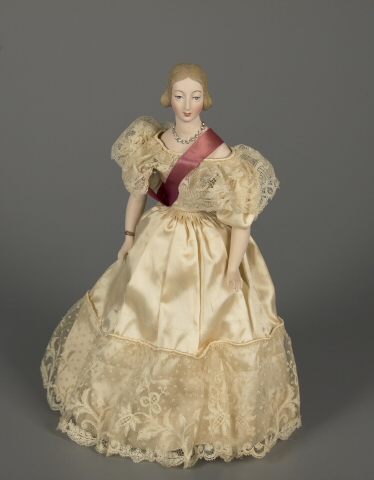
A Queen Victoria doll, made c. 1950. (Photo: Courtesy of The Strong Rochester New York)
Queen Victoria, a doll-enthusiast herself, became one of the most popular subjects of the 19th century. Portrait dolls of Queen Victoria were made to celebrate her marriage to Albert. Mourning Victoria dolls, dressed in all black, became popular at the time of Albert’s untimely death. Enrico Pierotti, of the famed doll-making family, claimed to have invented the modern realistic baby doll to celebrate the birth of Victoria’s first child, Victoria, the Princess Royal.
Royals all over the world were commemorated thusly. According to Tsagaris, fashionable royals like Queen Louise of Prussia, Josephine Bonaparte and Empress Eugenie were honored with dolls. The winners of major battles and elections were also honored with patriotic commemorative likenesses. William Thomas Sampson, a hero of the Spanish American War, was made into a very stern-looking doll to celebrate his victories. President McKinley was honored with a wax doll to commemorate his election.
American First Ladies, particularly Mary Todd Lincoln and Martha Washington, also became popular doll subjects. These dolls were typically sold as souvenirs, either of the nostalgic or patriotic sort, much like the commemorative plates and trinkets that were popular during times of national celebration or anniversaries.
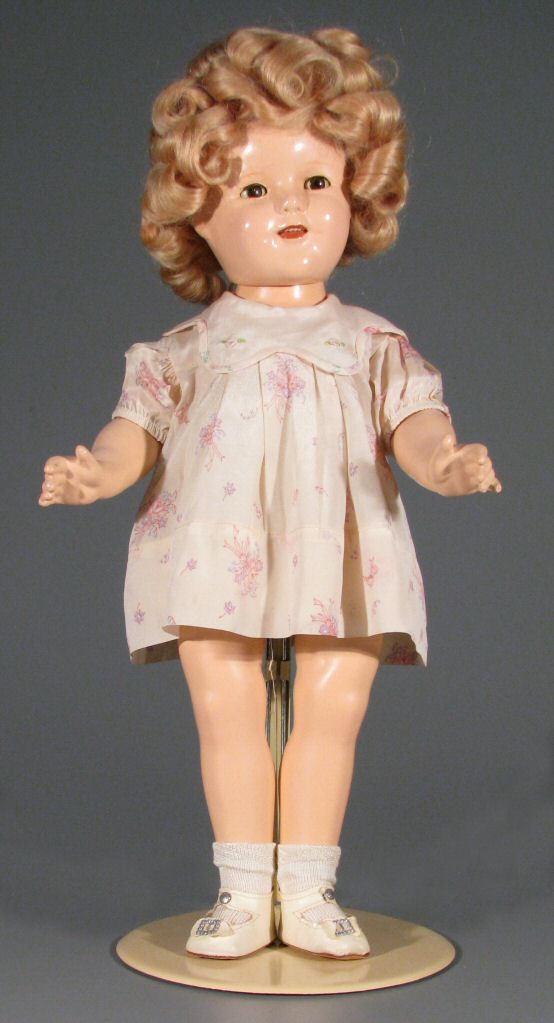
A Shirley Temple doll, c. 1933. (Photo: Courtesy of The Strong Rochester New York)
With the advent of film and radio, a new kind of celebrity took hold. Although famous performers like the singer Jenny Lind and the ballerina Fanny Elssler had inspired doll makers in the previous century, Hollywood took celebrity marketing to a whole new level. Actress and mogul Mary Pickford is often credited with commissioning one of the first modern promotional dolls, a full bodied figure in her own likeness. According to Pollock’s History of Dolls and Toys, the doll-making process proved surprisingly challenging:
Although it seemed at first quite a simple thing to turn out a miniature likeness of the star, it quickly developed into a baffling problem. Nearly three quarters of a year was spent in trying to obtain a suitable reproduction. The services of eight artists and sculptors were employed, but the task was not accomplished until Christian von Schneidau, the most famous Scandinavian artist in America, was commissioned to do the work. Sixty different models were made, and also one life mask which almost turned into a death mask, as Mary Pickford nearly suffocated in the process, and her face was so badly bruised by the weight of the plaster that for several days it was impossible for her to appear before the camera.
Today, the Mary Pickford bisque porcelain doll is worth more than $34,000, notes Tsagaris. But even the enormous popularity of Pickford dolls couldn’t match that of Shirley Temple, child pixie and national heroine of Depression-era America. It is estimated that between 1934 and 1938 more than six million Shirley dolls were sold, many of which were “unbreakable” composition molds by the Ideal Novelty and Toy Company. The Shirley Temple dolls that actually belonged to the actress, auctioned last July by Theriault’s, are among the most desired and expensive celebrity dolls for collectors today, says Tsagaris.

The Dionne Quintuplets dolls, 1935. (Photo: Courtesy of The Strong Rochester New York)
Newsworthy events, occasionally of the tabloid kind, also continued to be commemorated in doll-form. In 1935, a set of quintuplets were born to a family living near Montreal. According to Goodfellow, “these babies quickly became media personalities, and many doll manufacturers grasped the market opportunity presented by such a novel event.”
The Alexander Doll Company registered the Dionne Quintuplets as a trademark in 1936, and the success of their famed “Madame Alexander” line of collectable dolls, which included the five babies, placed the company, founded by sisters Rose and Beatrice in 1926, firmly on the map. The line was so successful that in 1937, the company issued another set of Dionne Quints, this time as toddlers in different colored dresses.
Throughout the ‘40s and ‘50s, royals and movie stars continued to be the most popular celebrity doll subjects. Dolls of Queen Elizabeth and Princess Grace in their wedding dresses were sold both as porcelain collectable items and as cheap rubber playthings. Yet in 1959, the doll industry was forever changed with the debut of the first Barbie, made by Mattel.

Twiggy with her doll. (Photo: Courtesy Mattel)
By 1967, Mattel had introduced their first celebrity doll–a likeness of the supermodel Twiggy. “At age 16, Twiggy was considered ’the face of 1966,’ so she fit perfectly into the whole ‘Barbie Teenage Model’ which was how Barbie was introduced into the world,” explains Ellin Aldana, Special Collections archivist at Mattel. “Twiggy was considered to be one of Barbie’s friends and so the age and her profession was kind of the living embodiment of what Barbie was supposed to signify.”
Today, Mattel’s celebrity and commemorative dolls, like a recent one of Chanel designer Karl Lagerfeld, tend to be marketed as keepsakes rather than playthings. “If you compare the process in how we developed Twiggy as opposed to today, I believe that the process is much more detailed and tailored,” Aldana says. “While before Twiggy was considered Barbie’s ‘friend’, now celebrity dolls are sold as individual collector dolls. These are not mass produced like the Twiggy doll was and are sold at higher prices.”
Over the last few decades, “souvenir” companies like the Bradford Exchange and Ashton-Drake have come to dominate the mass-produced commemorative doll market, which seems to be aimed exclusively at adults. Today, many niche doll makers also create beautiful commemorative dolls of great artistry and detail.
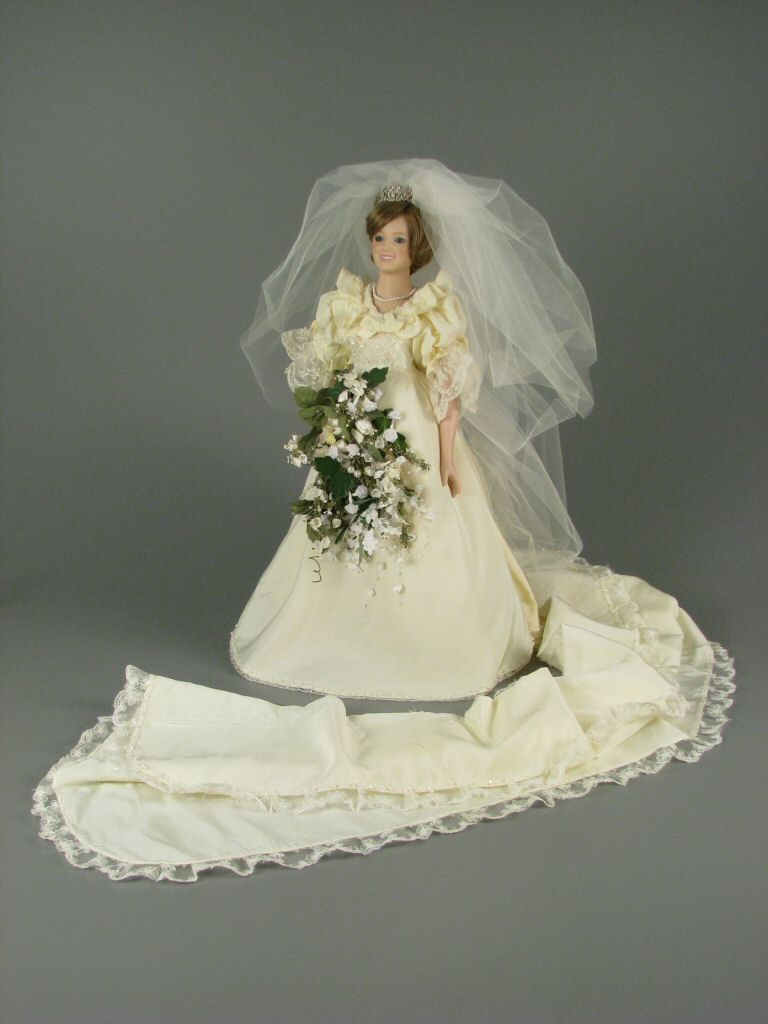
A 1981 Princess Diana wedding doll. (Photo: Courtesy of The Strong Rochester New York)
Tragic icons like Princess Grace, Jacqueline Kennedy and Elvis are perennial favorites. And as always, royals rule. Princess Diana inspired hundreds of collectible dolls, from her marriage to Prince Charles to her untimely death in 1997. After her death, production became even more fevered. In 2015, an internet rumor that the Princess Diana Beanie Baby, released to commemorate her death, was worth tens of thousands of dollars spread like wildfire. Ty Company, the makers of Beanie Babies, soon cleared this rumor up, explaining the doll was worth $47 tops.
But nothing could be stranger than the Franklin Mint’s now-discontinued baby Princess Diana doll series, “A proper little Princess,” which featured a toddler Diana wearing child versions of dresses she made famous as an adult.
These liberties with her likeness led the Diana Princess of Wales Memorial Fund to sue the Franklin Mint in 1998, claiming that the glut of Diana related items diluted the value of her name. This lawsuit led to a 13-year legal battle, which damaged the company’s reputation. According to the Franklin Mint, their sales plummeted from $620 million in 1998 to $40 million in 2004. The suit also cost the memorial fund millions of dollars, both in legal and settlement fees.

A Michelle Obama at the 2013 Inaugural Ball collector doll. (Photo: Courtesy Danbury Mint)
But the commemorative doll market remains strong, with Barack and Michelle Obama currently serving as popular subjects. Ashton-Drake offers several models, including a baby Obama “Birth of Hope” doll, and a Michelle Obama “First Lady of Fashion” collection. Ty Inc. made two felt dolls that looked suspiciously like Malia and Sasha (and shared the same names until the First Lady complained). And, of course, the young British royal family is a constant favorite. You can even buy two dolls modeled after William and Kate’s flower girls.
So what is it that keeps people buying these dolls? “We as humans have made dolls for millennia to express ourselves, and to preserve our culture and history,” Tsagaris says. “Commemorative/celebrity dolls bring us familiar faces in miniature. For fans of celebrities, the dolls can be another way to be a fan.”




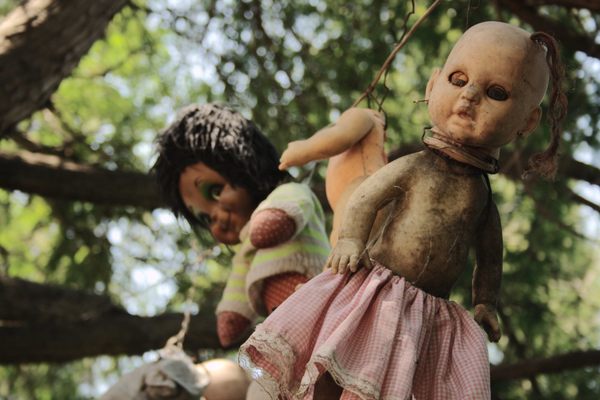
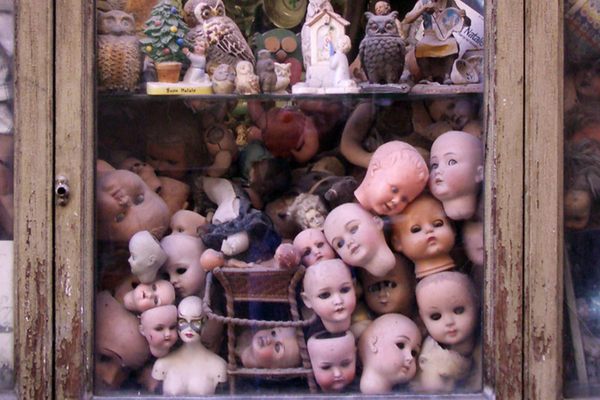
























Follow us on Twitter to get the latest on the world's hidden wonders.
Like us on Facebook to get the latest on the world's hidden wonders.
Follow us on Twitter Like us on Facebook